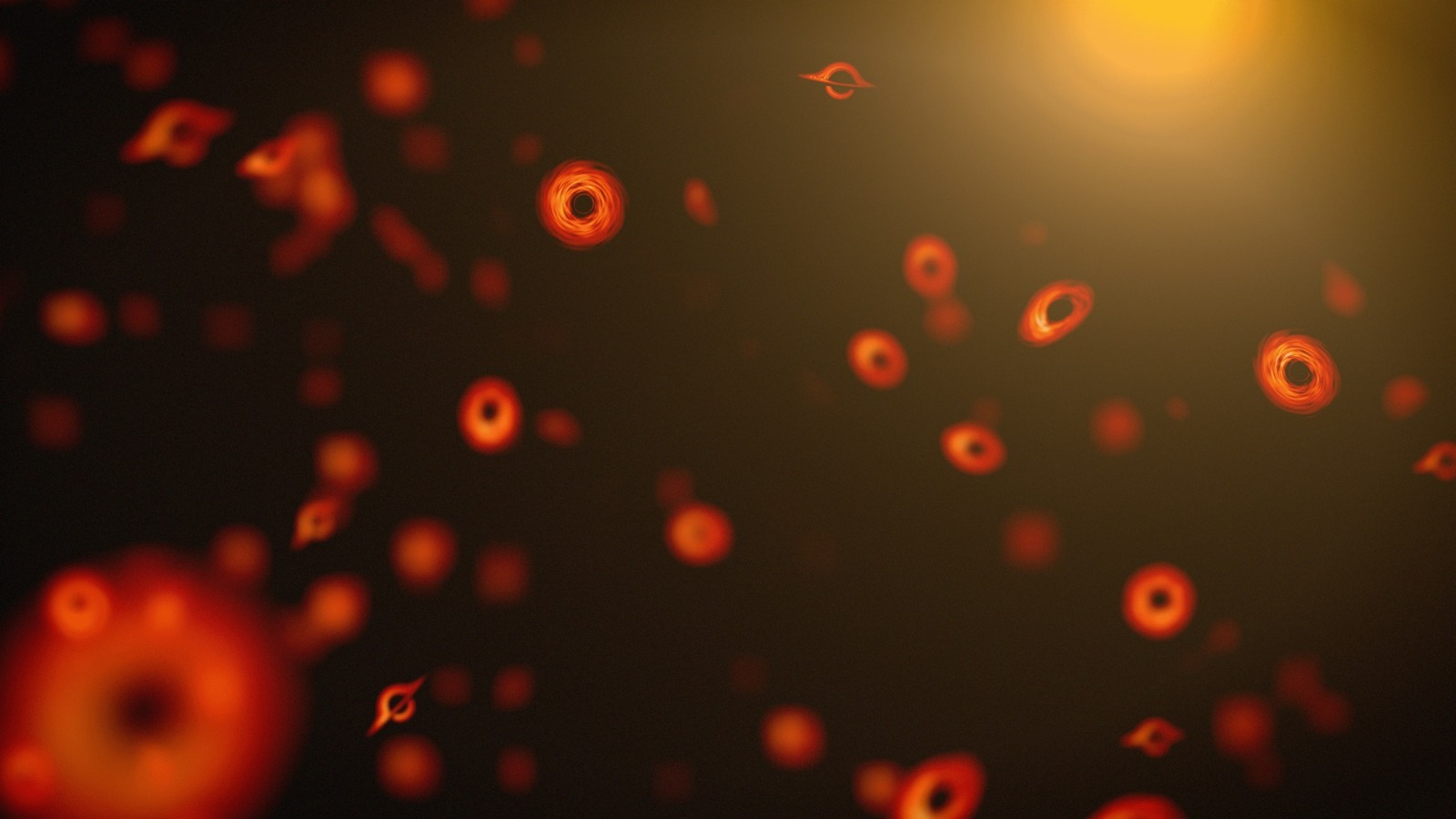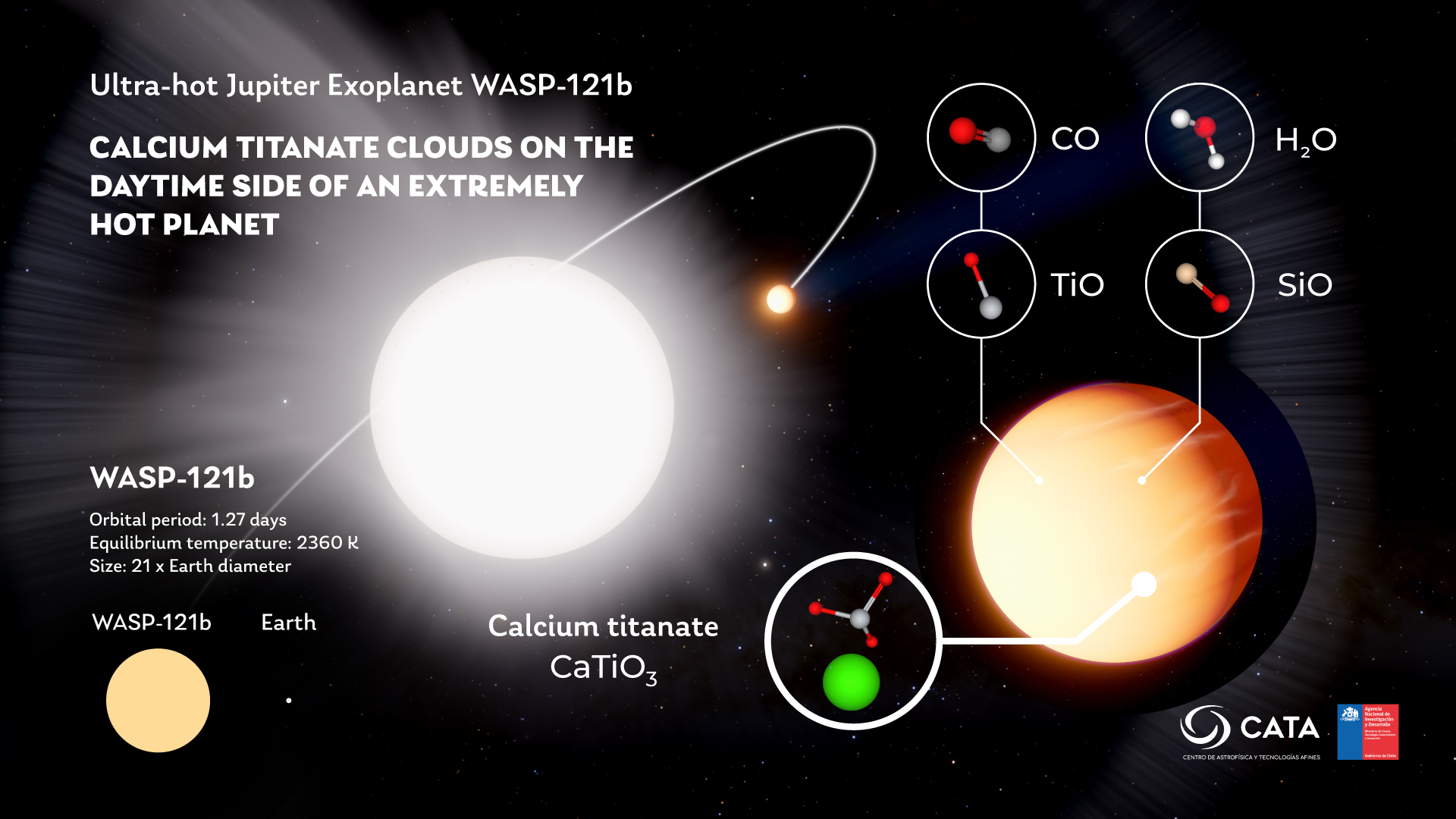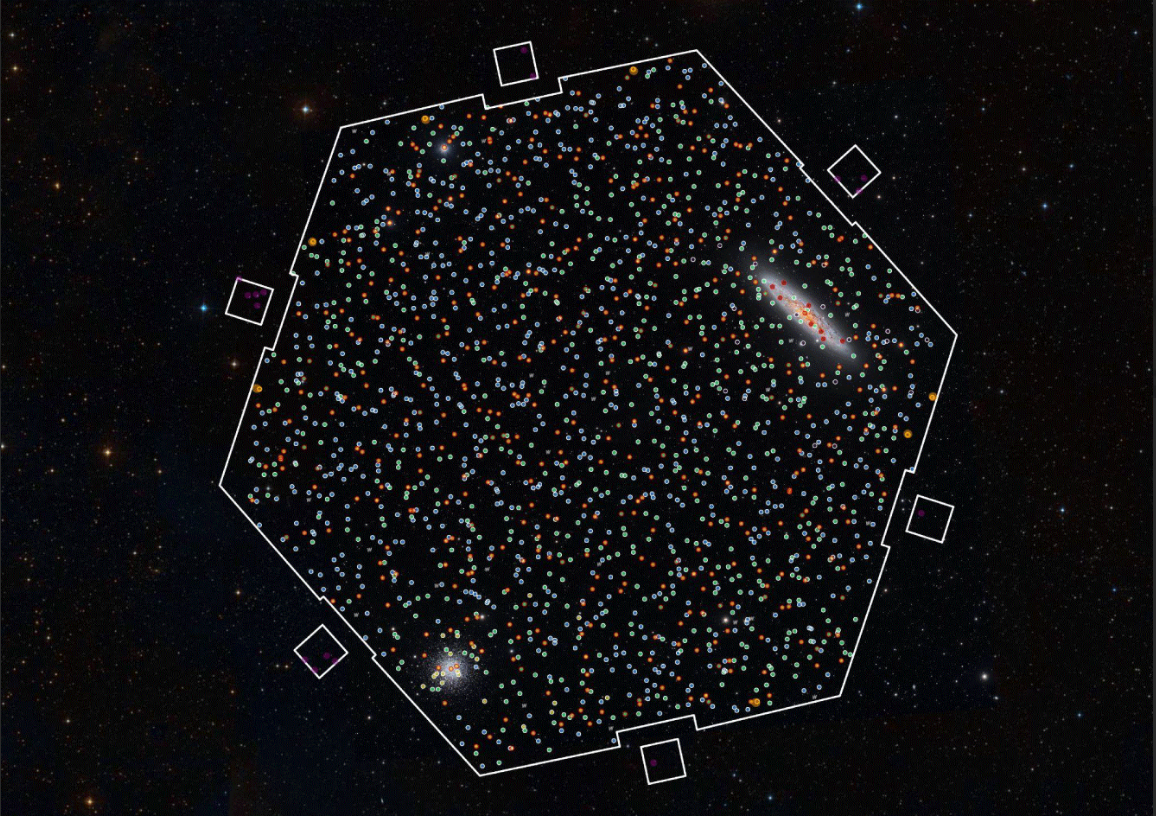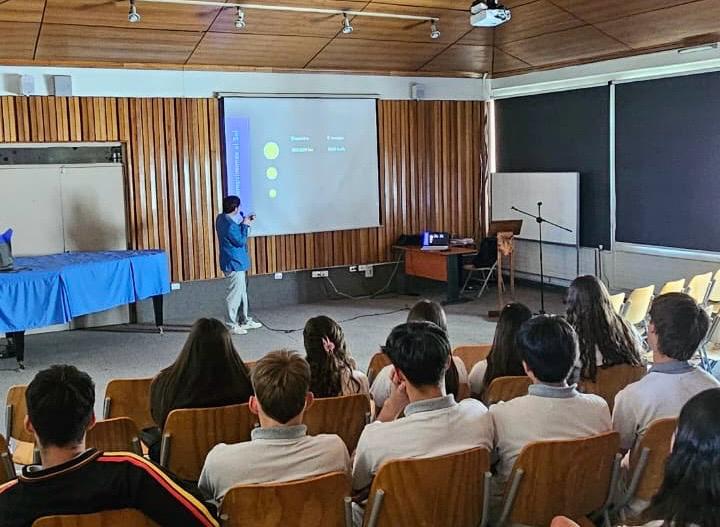
Chilean astronomer consolidates his position as a reference in the study of primordial black holes
Astronomer Dr. Catalina Casanueva has published a new study on primordial black holes (PBHs), which may have left an observable footprint in the sky. The researcher previously published her first study on this subject in 2024.
Dr. Catalina Casanueva, Postdoctoral Researcher at the Center for Astrophysics and Related Technologies (CATA) and UC astronomer, has taken a new step in the exploration of one of the most intriguing topics in cosmology today: primordial black holes (PBHs). In her second study on these theoretical objects, recently accepted by the prestigious journal Astronomy & Astrophysics, the young researcher explores how PBHs could have left an observable imprint on the sky we see today, work that was supervised by Dr. Patricia Tissera, Director and Principal Investigator of CATA.
Primordial black holes are a hypothetical class of black holes that could have formed moments after the Big Bang, due to the extremely dense conditions of the early universe. Unlike “conventional” black holes, which are born from the collapse of stars, PBHs may not have a stellar origin and, therefore, have been proposed as candidates to compose part of the mysterious dark matter, an invisible component that accounts for about 85% of the matter in the cosmos.
The new study
In 2024, the Chilean had previously published her first study of PBHs, where Casanueva studied how they could have affected the formation of galaxies by heating gas in the early universe. That study showed that if they were very abundant and had masses close to the mass of the Sun, PBHs would have prevented the formation of galaxies like the ones we know today.
In their new study, the astronomer and her team wondered whether these primordial black holes, though rare, might have contributed to the cosmic background radiation emissions that we continue to observe today, especially in X-rays, radio and the Lyman-Werner background. For this, they used a more realistic physical model of emission than many previous approaches, incorporating details about how these objects interact with their surroundings and emit energy.
“We opted for a more realistic physical model that considers not only the mass of the PBH, but also the environment where it is located, how it captures matter and what kind of radiation it emits. This allowed us to make more reliable predictions and compare them directly with observations. Having a more detailed model is key to better understand what role PBHs could have played and to more precisely constrain their possible characteristics,” explains the researcher. “If PBHs produced more radiation than we observed, we can rule out those scenarios.”
The results were revealing: it is confirmed that PBHs with masses similar to or greater than that of the Sun cannot account for more than 1% of the dark matter, in line with previous studies. However, that small percentage could be enough to explain part of the X-ray excess that still has no clear cause. That is, even if they do not make up all the dark matter, they could have left an observable trace in the present-day universe.
“Our results show that PBHs cannot be the bulk of dark matter if they have masses on the order of the mass of the Sun (or larger). However, it is still possible that smaller PBHs, for example, with masses close to one billionth of the Sun, could form a significant fraction or even all of the dark matter. These scenarios are not yet ruled out,” says the researcher.
Next steps in the study of PBHs
Both investigations (CV2024 and CV2025) reinforce the idea that, although PBHs may not be the main source of dark matter, they could still have played an important role in cosmic evolution. Casanueva highlights this as “an important breakthrough, as we implemented a detailed and physically grounded model to calculate the emission from PBHs, allowing us to compare it more realistically with current observations. This allowed us to set more reliable limits on how many PBHs could exist and to show that even a small fraction could contribute to the excess in the observed cosmic X-ray background, which still has no known origin”.
“This opens up new questions, such as whether there are similar signals at other wavelengths, or whether PBHs could be connected to recent anomalies that have appeared in the data. It also allows us to refine theoretical models, which are key to interpreting what new instruments and missions are revealing,” says the CATA postdoctoral researcher.
The astronomer comments that one of the next steps will be to develop the first simulation of a region of the early universe that incorporates these PBH emission models in a realistic way, which will allow studying not only their average effect, but also their local impact on the formation of galaxies and the growth of structures at different scales.
“These types of simulations are especially needed today, as we are entering a new era of observing the early universe, with telescopes and missions that are revealing more and more distant and older structures. In order to correctly interpret these data, we need detailed theoretical models that consider all possible energy sources and feedbacks, including PBHs,” comments Casanueva.
Finally, the researcher does not rule out that the case of PBHs is similar to that of black holes a few years ago: “For decades, black holes were only a theoretical prediction, until in 2015 they were detected for the first time by gravitational waves and in 2019 their first direct image was obtained. PBHs remain hypothetical, but this case shows why it is crucial to theorize: not only do we anticipate possible discoveries, but also, we develop the tools to identify them and understand what we observe.”
Recent news
-
 Publicado el: 12/12/2025Call for applications for the CATA Emprende 2026 program now open
Publicado el: 12/12/2025Call for applications for the CATA Emprende 2026 program now open -
 Publicado el: 09/12/2025CATA researchers detect titanate clouds on ultra-hot exoplanet
Publicado el: 09/12/2025CATA researchers detect titanate clouds on ultra-hot exoplanet -
 Publicado el: 05/12/2025CATA launches Applied Research Fund 2026
Publicado el: 05/12/2025CATA launches Applied Research Fund 2026 -
 Publicado el: 01/12/2025The astronomical experience was part of the 4th Ladera Sur Festival.
Publicado el: 01/12/2025The astronomical experience was part of the 4th Ladera Sur Festival. -
 Publicado el: 25/11/2025Students from Angol held an astronomy workshop with CATA
Publicado el: 25/11/2025Students from Angol held an astronomy workshop with CATA
Categories list
- Acknowledgments 21
- Astrobiology 6
- AstroCluster 1
- Black holes 18
- Corporativo 57
- Cosmology 5
- Descubrimientos 23
- Disclosure 73
- Exoplanets 14
- Extension 6
- Galaxies 21
- Galaxies formation 5
- Inter y Transdisciplina 4
- Local Universe 16
- Publications 6
- Sin categorizar 34
- Solar System 21
- Stellar formation 8
- Technology 16
- Technology Transfer 18



